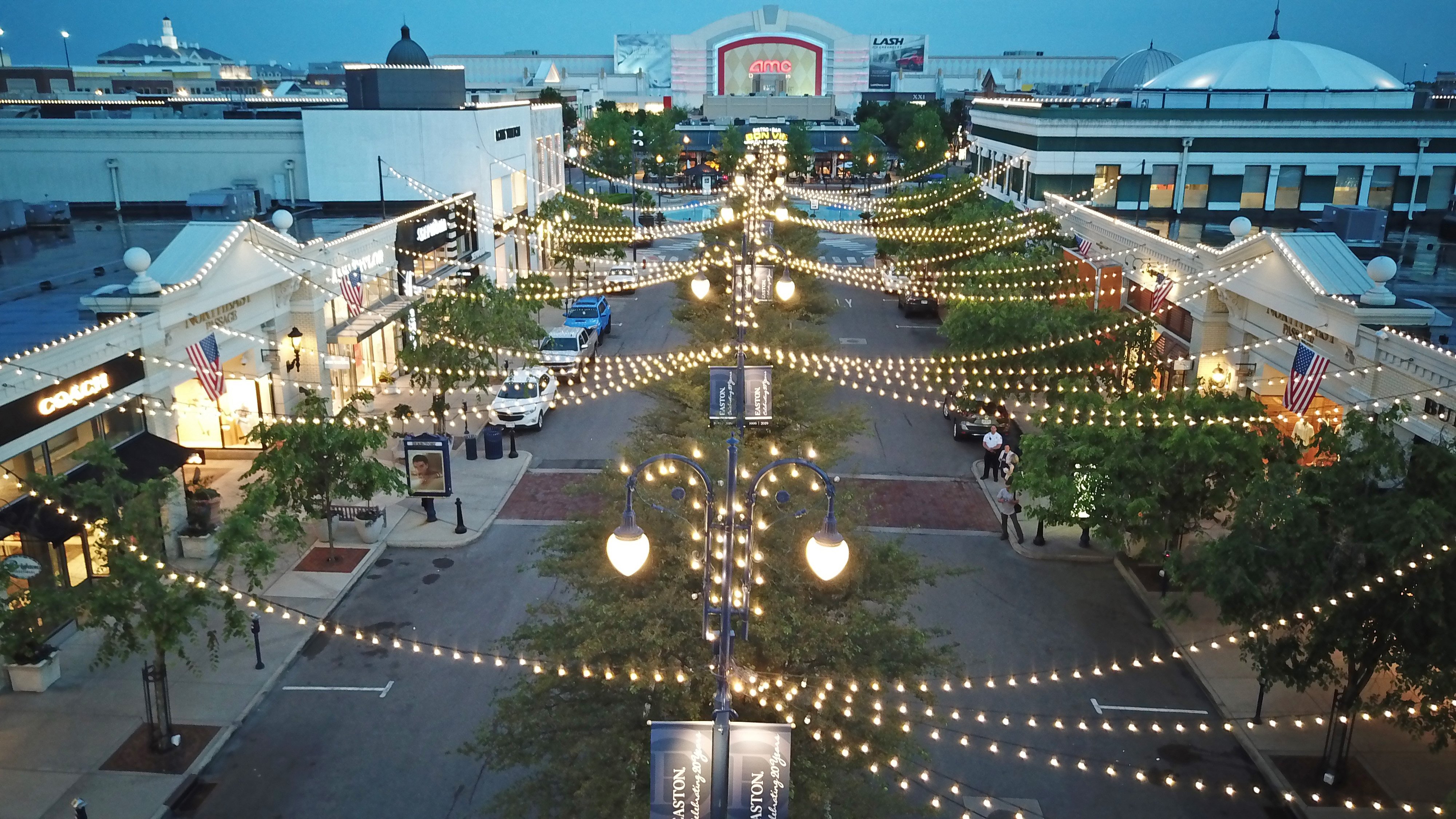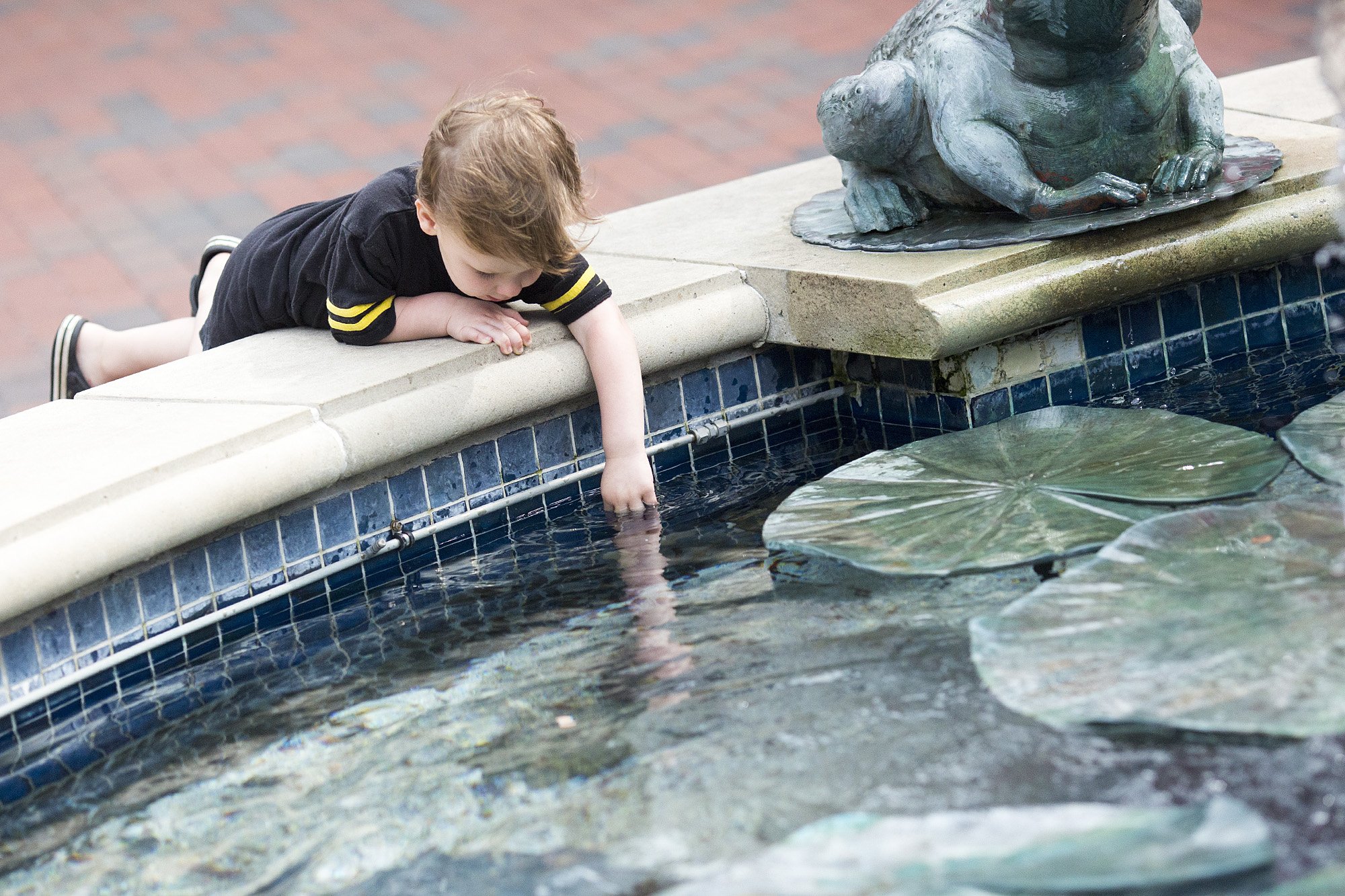
Easton offers 'experience' that consumers want before pulling out wallet
When Easton Town Center opened in 1999, the open-air concept and mix of stores and restaurants signaled a new future for malls.
Twenty years later, as online retail and changing shopping habits threaten some brick-and-mortar stores, the mall landscape continues to change.
Some retail experts say concepts such as Easton might be the only ones that survive.
"Easton is constantly changing; they don't just stand pat and wait," said Chris Boring, a veteran Columbus retail expert. "They're always after the best retail concepts out there. When you see that new retailer come to Columbus, nine times out of 10 they're going to want to be in Easton."
Easton Town Center opened 20 years ago with 70 businesses spread across the 750,000-foot complex on Columbus' Northeast Side. The Town Center now includes 190 stores.
At a time when Easton is building a $500 million expansion, many shopping malls in America are struggling. In 2017, Credit Suisse predicted that 25% of U.S. malls would close by 2022.
Retail experts say Easton's success is due in large part to its mix of offices, hotels, housing, entertainment and retail.
“Easton figured out that tenant mix has to be much more interesting than just a bunch of specialty retail apparel stores, and I think that strategy is the reason they'll keep their footfalls somewhat even,” said Lee Peterson, an executive vice president at WD Partners, a Dublin retail-consulting company.

The open-air concept gives Easton shoppers more of an entertainment experience, experts say.
“We all know that the way we shop is changing rapidly, but I think that what an open-air lifestyle place like Easton offers is the experience,” said Rob Vogt, a managing partner with the Columbus-based real estate research firm Vogt Strategic Insights. “People want to go to someplace where they can walk and shop and have a drink and go to dinner. That’s an experience we’ll always want regardless of how we shop.”
Since Easton’s creation, three other shopping centers have opened in the Columbus area — Polaris Fashion Place on the Far North Side in 2001, the Shoppes at River Ridge in Dublin in 2007 and the Tanger Outlets in Sunbury in 2016.
In addition, Bridge Park in Dublin and Grandview Yard in Grandview Heights have opened to provide a competitive mix of dining, entertainment and living in a suburban "downtown" setting.
In that same time frame, Northland Mall and Downtown's Columbus City Center shut their doors, and all four anchor stores left Eastland Mall. Westland Mall closed in 2012 but might be finding new life after LGR Weston bought the former Sears building.
The Continent, which served as a precursor to the "live, shop, work" mantra of Easton, eliminated all of its restaurants, shops and clubs at its North Side site in 2001. It's gone through a bevy of owners and ideas since, all of which have failed. In addition, the Mall at Tuttle Crossing, near Dublin, recently lost its Sears store, one of its original four anchors.
"Columbus overbuilt its retail sector," Boring said. "There's just not enough retail to go around anymore in those spaces."
One of the main reasons that these malls have closed has been due to a change in how consumers shop, experts say. Many people buy clothes and other items that were once purchased in brick-and-mortar stores from online retailers.
“Amazon's revenues have increased over $100 billion in the last three years,” Peterson said. “It's not like that money is coming from the sky; it’s coming from other retailers.”
To survive the rapidly changing landscape, other malls have been experimenting with the mixed-use concept that Easton started 20 years ago.
Polaris, which this year lost Gymboree, J. Crew and Sears, opened a work and social space in April and also announced that it is working to open the former Sears store to the outdoors, which could create new retail and entertainment opportunities, according to Washington Prime Group, the mall's owner.
The Shops at Worthington Place have filled its empty storefronts with a diverse group of tenants, ranging from a nail salon to fitness studios.
Even with these changes,most malls face an uncertain future, according to David J. Stanley, an associate professor of history and director of the humanities at Ohio State University.
“There might be a future for malls, they’ll just look very different from how they do now," Stanley said. "It’s not going to be just shopping. The biggest thing is that the big-box stores are looking like they are under threat. As much as they have defined what a mall looks like, I think that’ll be one of the biggest changes."
Despite these trends, some high-ranking store officials have a more optimistic outlook about the future of shopping centers.
"In this age, when we’re seeing like every headline reference a retail apocalypse, we continue to invest in our global store base," said Fran Horowitz, the CEO of the New Albany-based clothing brand Abercrombie & Fitch. Horowitz's comments came in the company's quarterly call with analysts at the end of May.
"We have solid partnerships with our landlords and that's because we are one of the few retailers that remain committed to opening and remodeling stores. That has not changed."
Peterson believes Easton's blueprint might help the complex become one of the last shopping centers standing.
“There's just going to be a lot less malls, and they're going to be different,” Peterson said." I don't know how long it's going to take — maybe it’ll happen in 2030 — but one day there's going to be just Easton. That's it."



